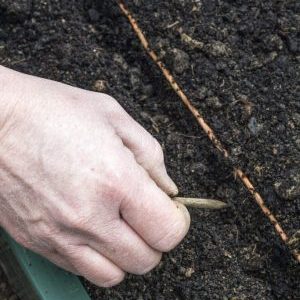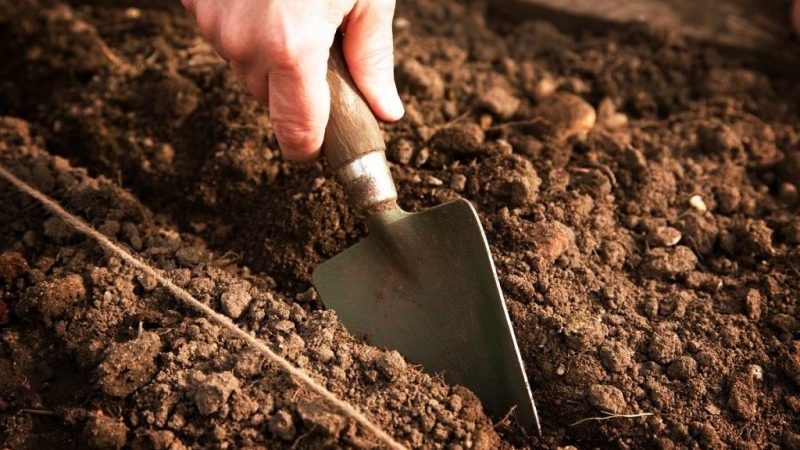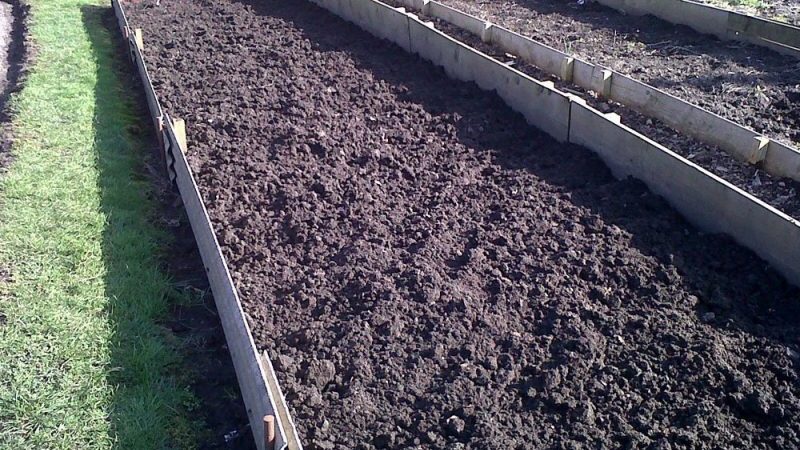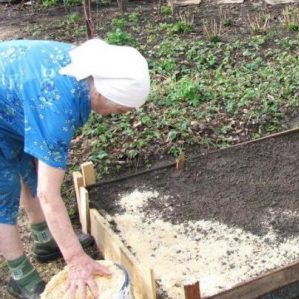Features of preparing a bed for carrots in the fall
In order to harvest a high-quality crop of carrots on your site and get large, sweet roots, it is important not only to pay attention to the choice of seed. One of the main conditions is the correct preparation of the soil for carrots in the open field.
All events need to be carried out in the fall. About what kind of land carrots love, as well as all the nuances of the autumn preparation of the garden for planting, read our article.
The content of the article
Features of planting carrots
The autumn period is almost the ideal time to apply top dressing to the soil. During the winter, all fertilizers will saturate the soil, and the planted crops will immediately begin to absorb nutrients in the form they need.
Carrots planted in autumn grow larger, less vulnerable to pests and practically not susceptible to diseases. In addition, the harvest will appear 1-2 weeks earlier than the late varieties.
Carrot beds are chosen where the least weeds grow. They always appear before other plants, interfering with the normal development of other seedlings.

In cooler regions, it is important to choose the right variety - it must be resistant to low temperatures and rich in carotene.
For Siberia and Ural special varieties are suitable, bred by breeders for a harsh climate:
- Dayana;
- Nastena is sweet;
- Autumn Queen;
- Chantenay;
- Nantes-4;
- Vitamin-6;
- Incomparable.
For subwinter planting, it is better to choose a site on an elevation. Snow will melt off it faster in spring, and there will be no stagnation of water. Carrots do not like drafts, so they need a place protected from the wind.
What soil does carrots like?
The bright orange vegetable prefers light soil. Gardeners often add sand to make it more airy and oxygenated. If there is clay and heavy soil on the site, you need to add a bucket for every square meter. To increase fertility and friability, compost can be added in the same amount along with river sand.
Reference. For carrots, choose areas with bright sunlight. Shading negatively affects taste and yield.
Excess sand, on the other hand, interferes with the retention of moisture needed by carrots and nutrients. Therefore, it is useful to add a bucket of rotted compost or 3-4 kg of leaf humus. Wood sawdust is also used, but they must be well rotted so as not to acidify the soil.

Acidity
You can not plant a culture in acidic soil, because of this, the roots are hairy and clumsy. Lime or chalk can be added to the acidic area. They are scattered over the surface for subsequent digging to a depth corresponding to the bayonet of the shovel. Carrots love a pH of 6-6.5, that is, neutral or slightly acidic soil.
With an acidity of up to 6, 300 g of lime or chalk are added for each square meter.
Suitable predecessors
Some plants are able to extract all nutrients from the soil, so carrots should not be planted after them. These include fennel, parsley, parsnip, cumin, beans, the carrot itself.
Tomatoes, zucchini, potatoes, cucumbers, onions and garlic are considered good predecessors. If the last two plants are left next to the carrot beds, the root crop will be protected from pests.
How to prepare the land in the garden

When preparing a bed for carrots in the fall, one of two methods of digging is used. The first is that the earthen lump can be left intact, not broken, in order to preserve the maximum number of beneficial bacteria in the ground and favorable microflora in the lower and upper layers. The second involves breaking the lumps completely and turning over the layers. However, the latter method contributes to the freezing of the soil, therefore it is not used if early frosts began in the fall.
Organic fertilizers are not applied to the garden. The depth of the prepared hole should be at least 15 cm so that moisture does not stagnate in it. This place should no longer be touched for the next 1.5 months before planting. In October, when the soil settles and compresses slightly, harrowing with a rake will be required to loosen it.
The next step is making seed grooves. Their depth should be at least 5-6 cm.If the soil is clayey and heavy, it is enough to leave 1 cm each. Between the grooves, a distance of 15 to 20 cm is observed.The planting site is almost ready, it is left alone for 3-4 weeks, covering from the rains with a film.
Water permeability test
Water permeability is one of the most important soil properties. It depends on the composition, its structure and the frequency of moisture. In the garden, you can check this indicator in a simple way. A metal cylinder with a diameter of 50-60 cm is pressed to a depth of 5-10 cm. Another cylinder is cut around it, but with a large diameter - 90-95 cm. The soil is well compacted at the walls of the frames, and a scale for measuring the water level and thermometers are mounted inside each.
Measurements must be made at a temperature of + 10 ° C and a water pressure of 5 cm. The optimal indicator of water resistance is from 100 to 500 mm of a water column. A mark over 1000 is considered a complete failure, and less than 30 mm of water column is considered unsatisfactory. Water permeability is measured within 5-6 hours.
Fertilization

An important rule when fertilizing soil for carrots is a categorical prohibition on the introduction of fresh manure... From such an additive, the roots are gnarled, cracked and excessively dry.
Superphosphate or potassium salt is used as mineral fertilizers - 15-20 g per 1 sq. m. Wood ash well compensates for the lack of phosphorus in the soil. But fertilizers with chlorine content are undesirable; carrots react to them extremely negatively.
Reference. During the entire period of growth, from the moment of planting in the soil to harvesting, carrots are fertilized only twice: four weeks after the appearance of the first shoots and then after another four weeks.
Do not forget that carrots actively absorb all the elements from the soil, so it is not recommended to use store-bought chemicals.
When and how to plant
It is difficult to indicate the exact date suitable for planting carrots before winter, since everything depends on weather conditions... The optimal period is the second half of November.... The main condition is a stable air temperature from + 3 ° С to -5 ° С for two weeks. At the slightest warming, seedlings will quickly appear, and then, unable to withstand the winter cold, they will die.
Seeds are sown in the prepared area. They need to be sprinkled with a layer of warm and dry soil, and peat or humus should be spread on top with a layer of up to 3 cm. All together should be slightly compacted with a shovel, but there is no need to tamp it strongly.
The seedlings do not require special care. It is enough to cover the beds with needles, and if it snows, form not too high snowdrifts.
Tips from experienced gardeners

Autumn planting has special benefits. It will be possible to harvest a fresh crop at the beginning of spring, just when you really want fresh vitamins.
One of the most common mistakes that experienced summer residents recommend avoiding is sowing carrots long before the first cold weather. The weather in late autumn is changeable, and prolonged frosts are often replaced by sharp warming, which contributes to seed germination.
To avoid overspending and evenly distribute the seeds over the site, it is recommended to mix them with dry sand or semolina in a 1: 5 ratio before planting.
Another valuable advice from professional gardeners: in no case should the seeds be soaked before the autumn planting, they must be dry. This measure is only necessary for spring seedlings.
Conclusion
A rich harvest of carrots in early spring is not difficult to get. It is enough to pay attention to the preparation of the soil and the choice of the planting site, feed the soil and choose the appropriate variety.
Tasty, healthy and vitamin carrots are suitable for fresh food, in side dishes and salads, however, unlike late varieties, they are not suitable for long-term storage.
Most of the recommendations are for agronomists with higher education, especially experience with water permeability, and with pH measurement too.
In other articles I read that carrots do not like adding ash to the soil ... Who to believe?